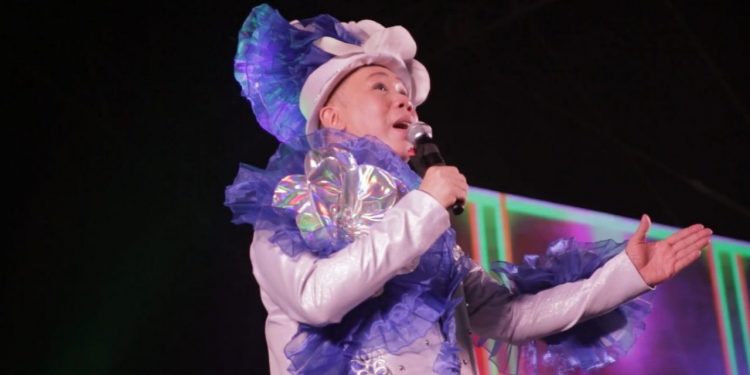“Do you still get nervous when you perform?”
“No, I don’t get nervous anymore. If it’s a bigger show, I might be slightly nervous. But once I get on stage, the fear is gone and I start performing,” replied Sam Loo, 56.
Dressed in a white costume, with electric blue trimmings, Sam paced back and forth the stage entrance before making his way up.
He’s been in Singapore’s getai scene for more than 30 years. He’s what most would call an industry veteran.
The makeshift stage is erected in a multi-storey carpark at one of the factories in Kaki Bukit.
Dozens of similar stages are put up across Singapore during the Hungry Ghost Festival, with offerings to the departed just as important as the show itself.
To Sam and many of his peers in the industry, the makeshift stage is how they earn a living as getai performers.
Talking About Numbers
There are good months when Sam can be booked to perform a few shows a night, and of course there are bad months. As a freelancer in an industry that’s seasonal, it doesn’t come as a surprise.
A majority of getai shows take place during the 7th month of the lunar calendar. They can also be held during the Chinese New Year and the Mooncake Festival.
During low-demand seasons, Sam heads to the pubs to perform.
“Every job has its share of challenges. I may earn more during the 7th month. But I also do regular jobs. Just look at the number of costumes I have, and you’ll see how much I have invested in these,” said Sam candidly.
Each costume can cost him anywhere between $200 and $1,300, and Sam’s home has a room where he stores hundreds of them.
Becoming a Getai Artiste
Sam’s love for performing started at the age of 18 when he began taking singing lessons.
“As students, we were given opportunities to perform on stage. During those performances, I enjoyed performing and the applause. That was when I realised I loved performing,” he said.
And he’s been doing it ever since. And in 30 years, many things have changed. Take for instance the way they advertise their shows.
Getai performers used to depend on word of mouth and posters to advertise their next performance and to get future gigs.
These days, getai performers like Sam prefer to use social media such as Facebook to help with that. In fact, Sam has thousands of followers on his social media site. For those who can’t watch the performances live, they can catch it online where it’s usually streamed live, said Sam.
Hopes for the Future
At 56, Sam is one of the more senior getai performers in the industry. Many getai performers take on apprentices to continue the culture.
“Getai is a culture worth preserving. I am getting older as we speak, but I hope to keep doing this as long as I can. As long as I have the energy to do it, I will continue to perform,” said Sam.

